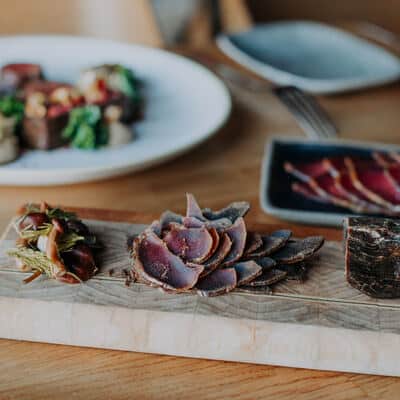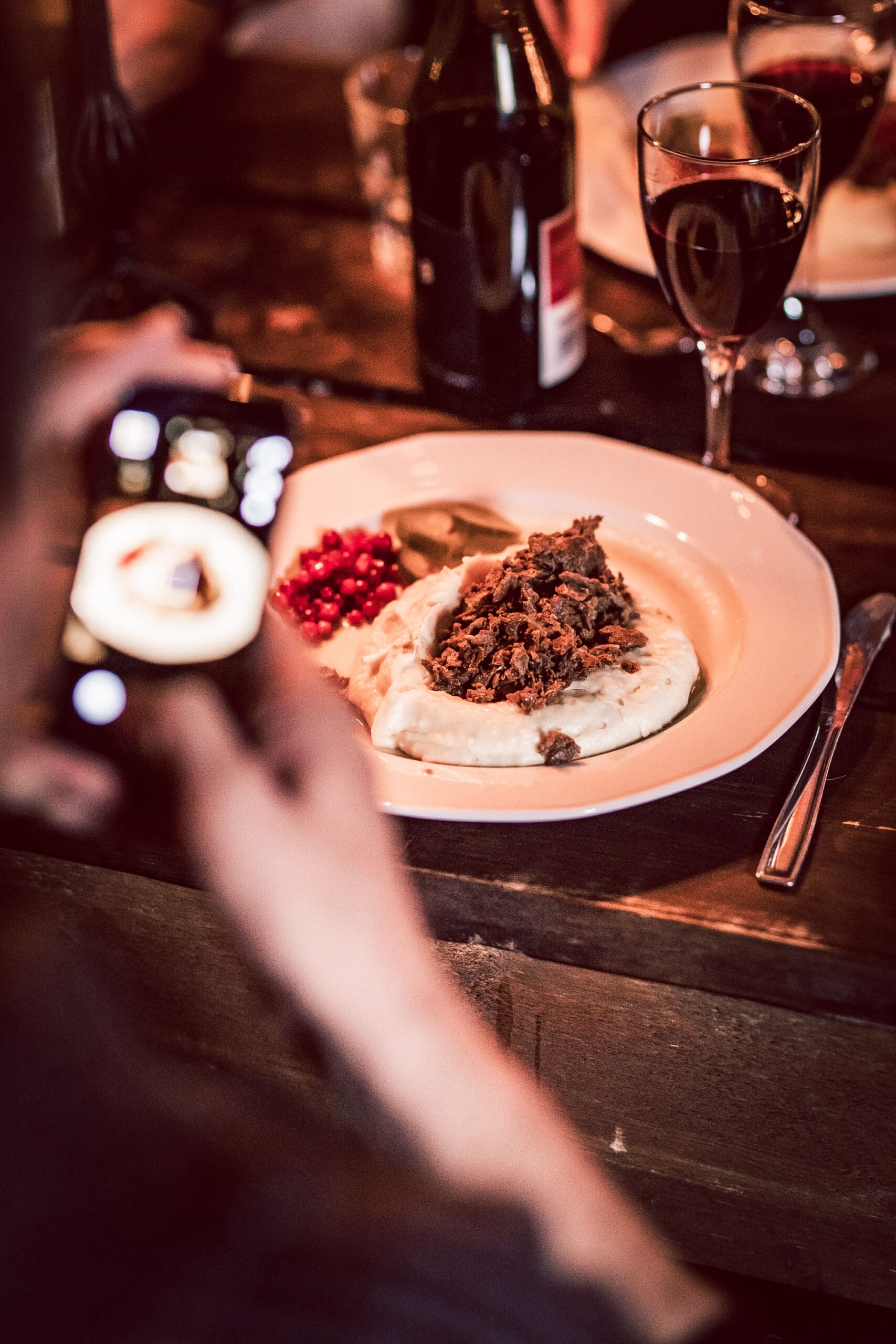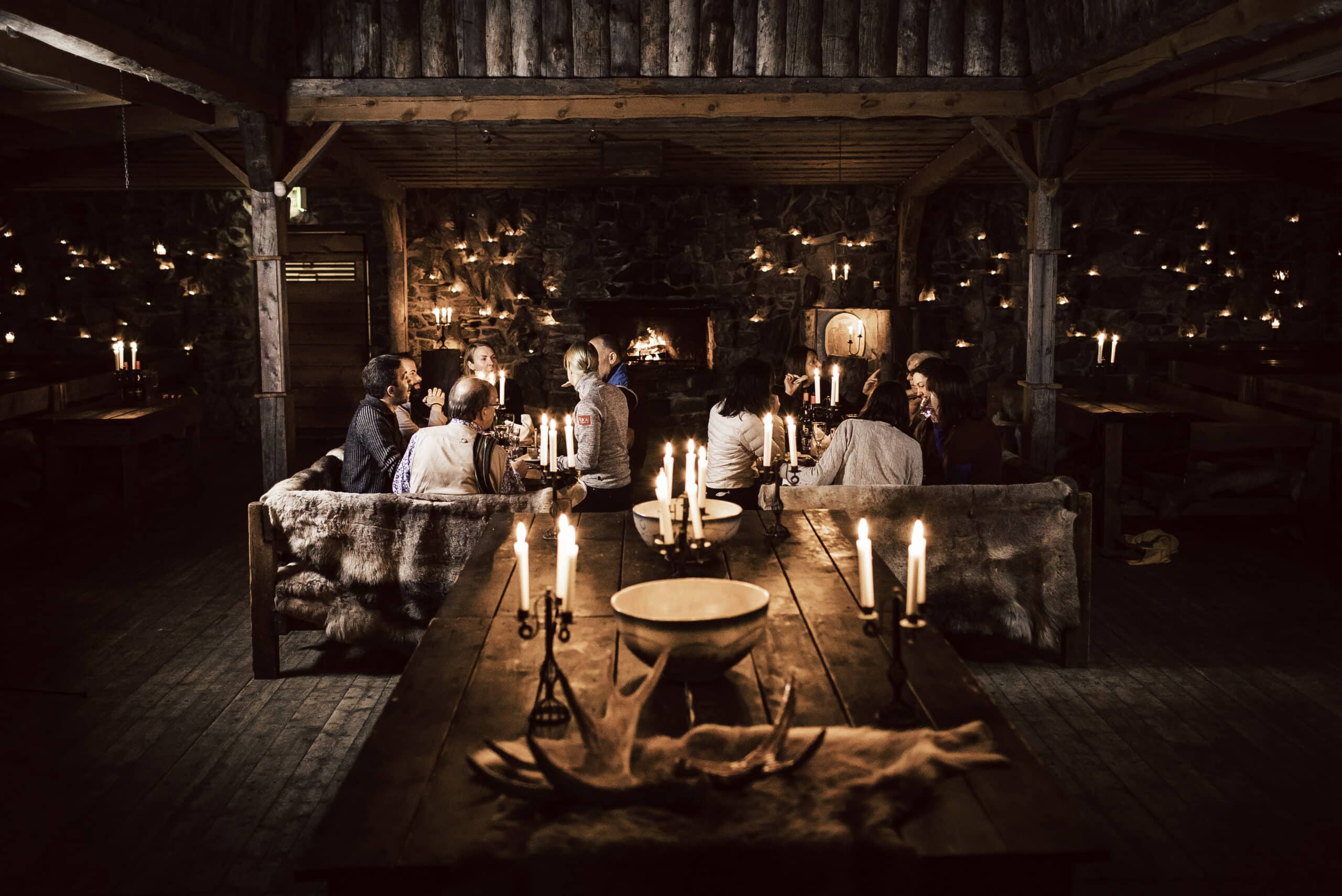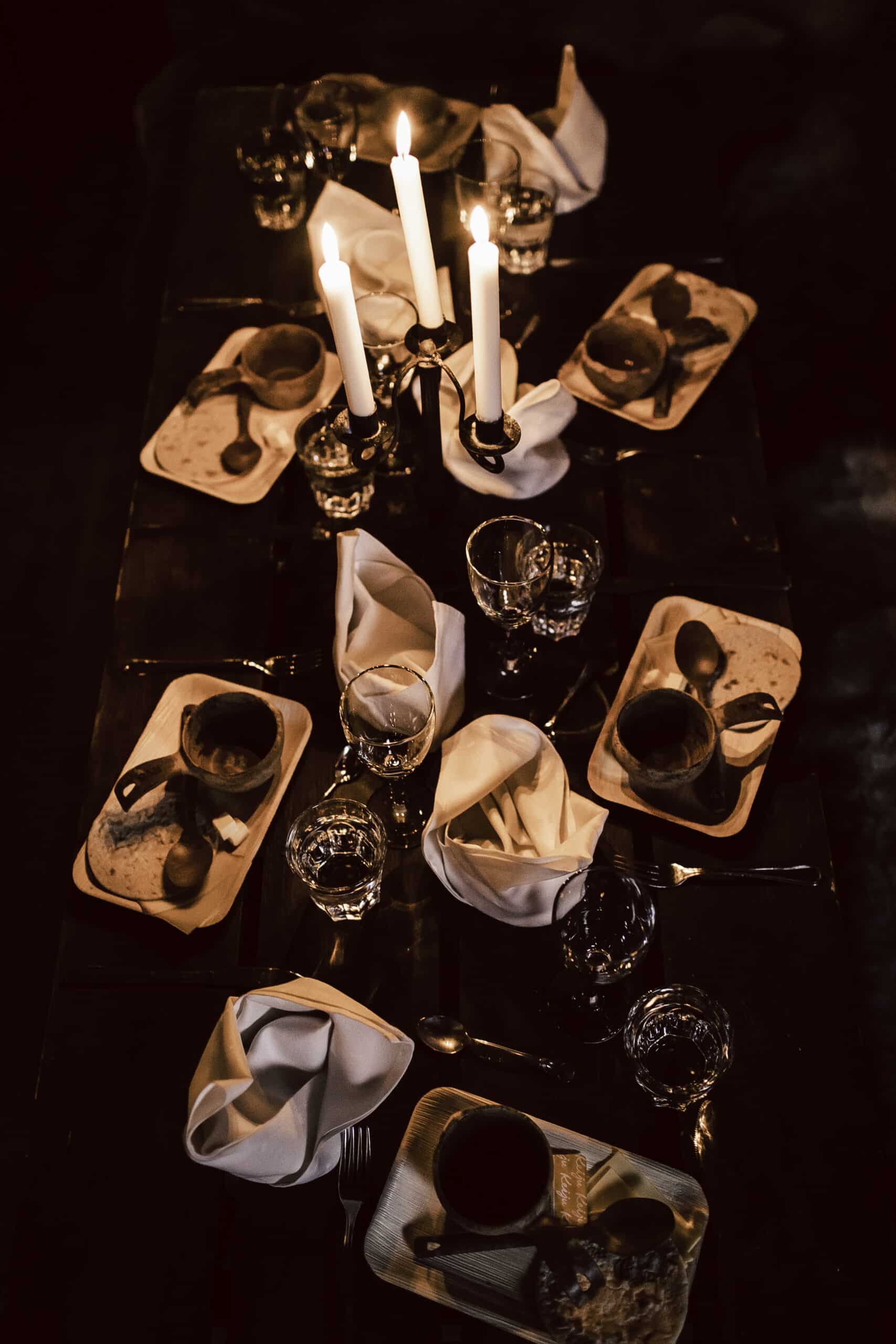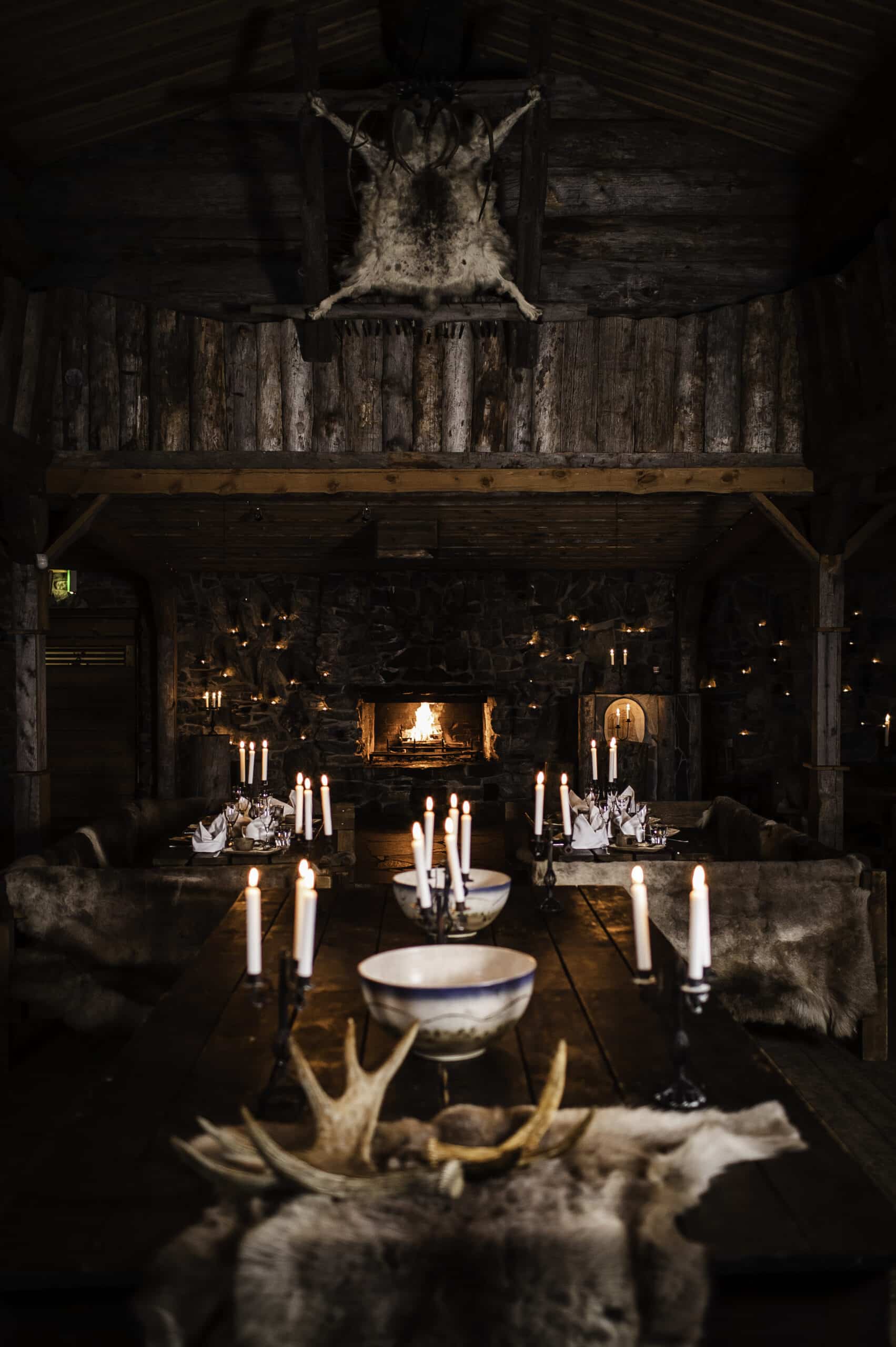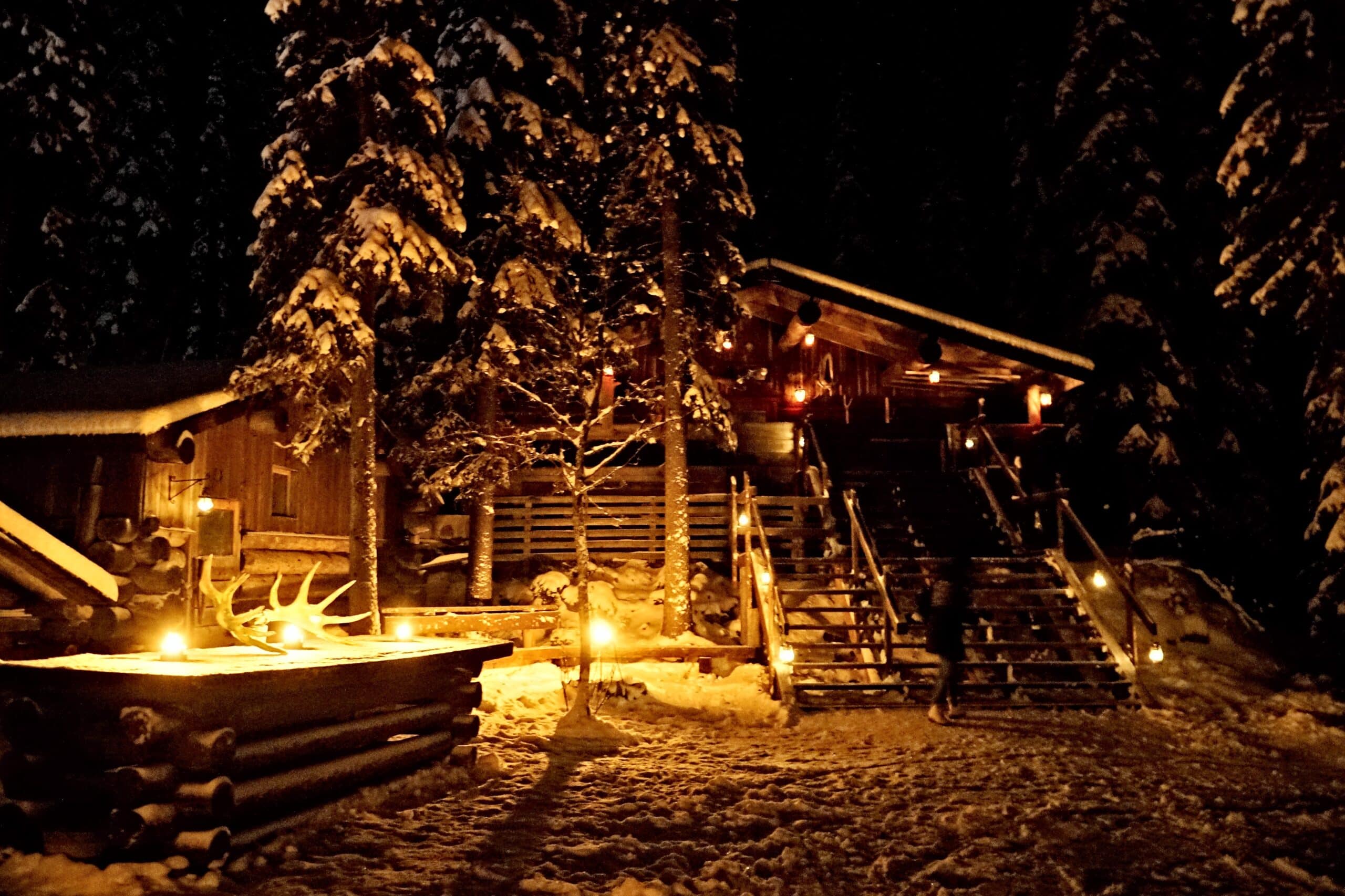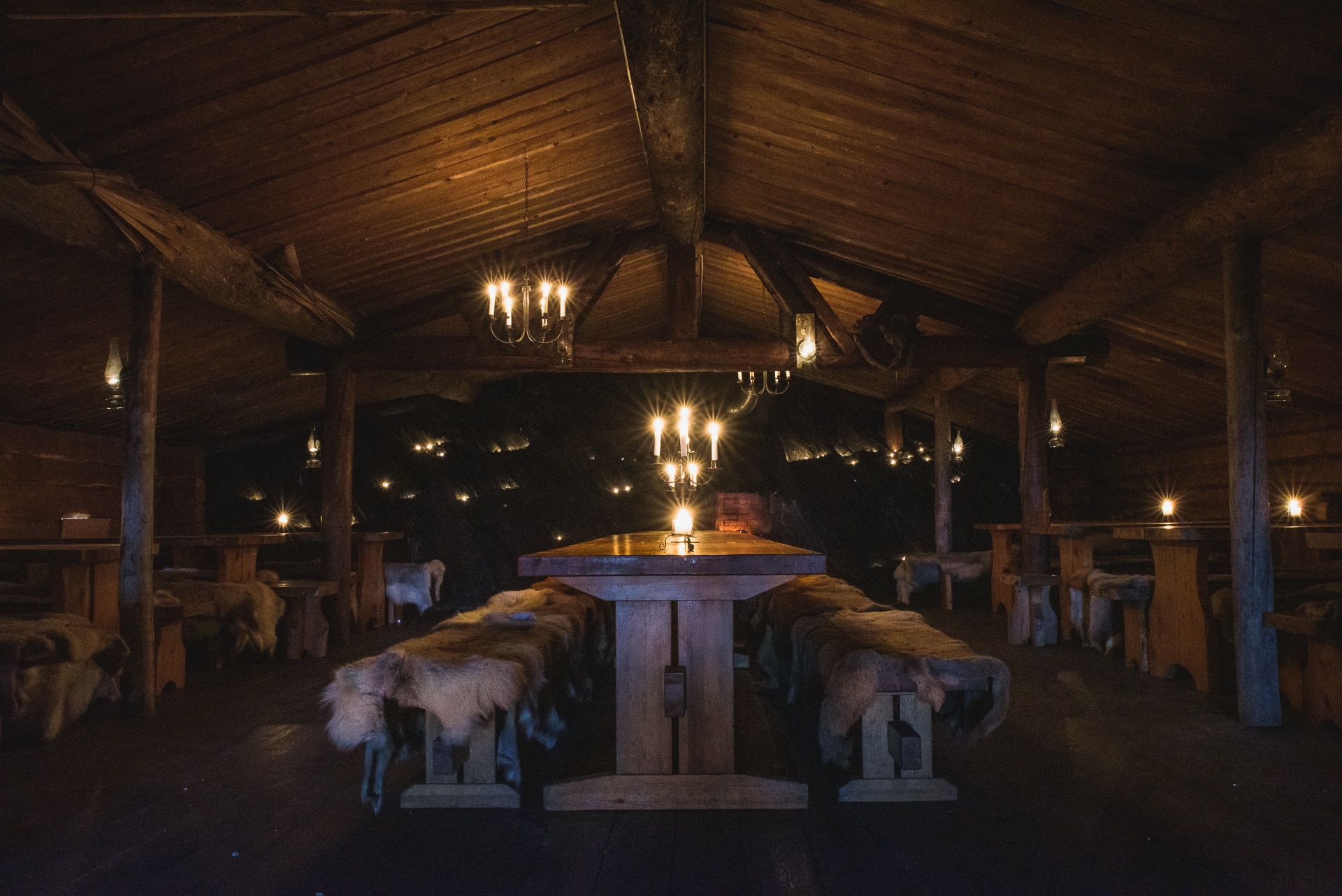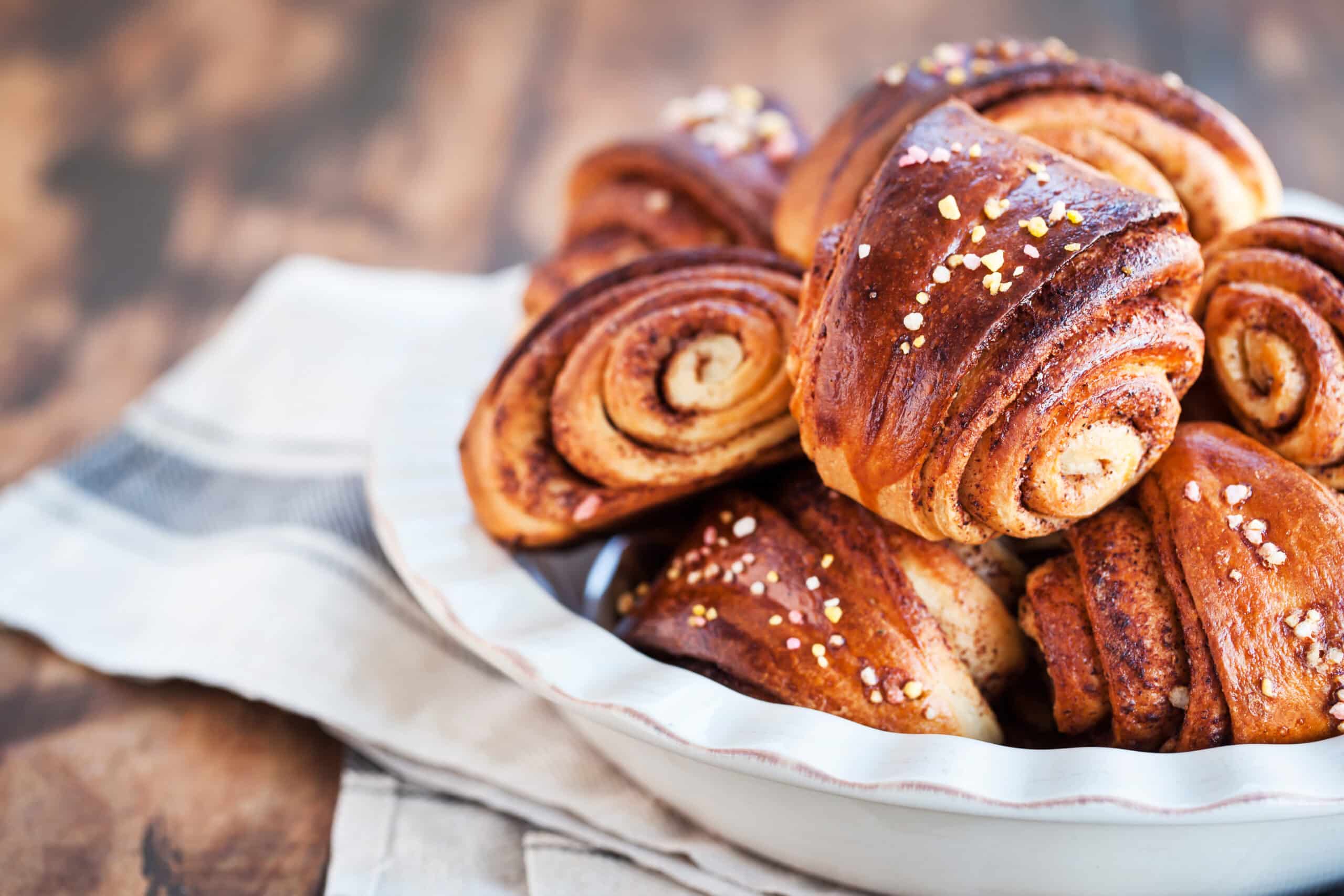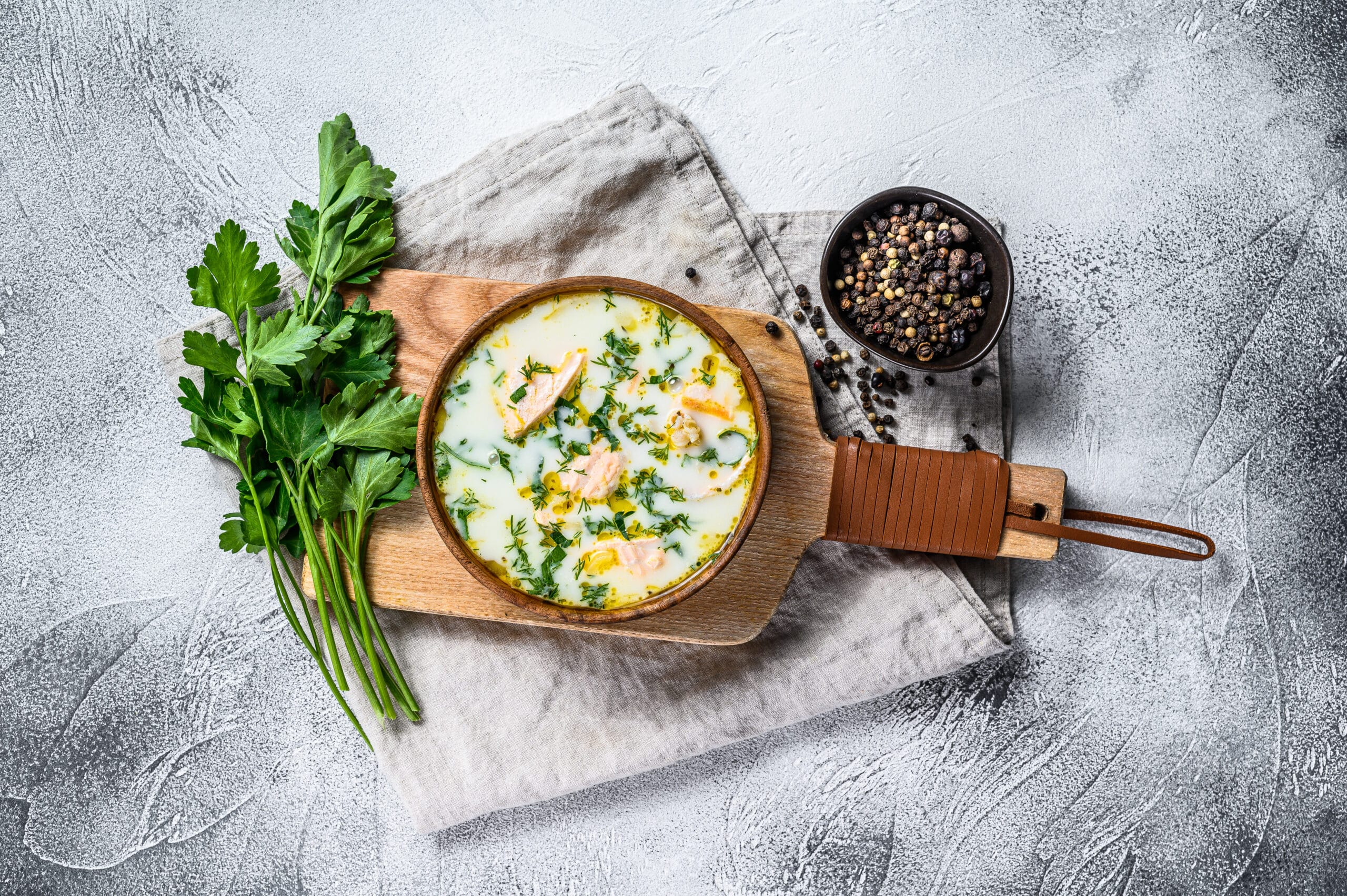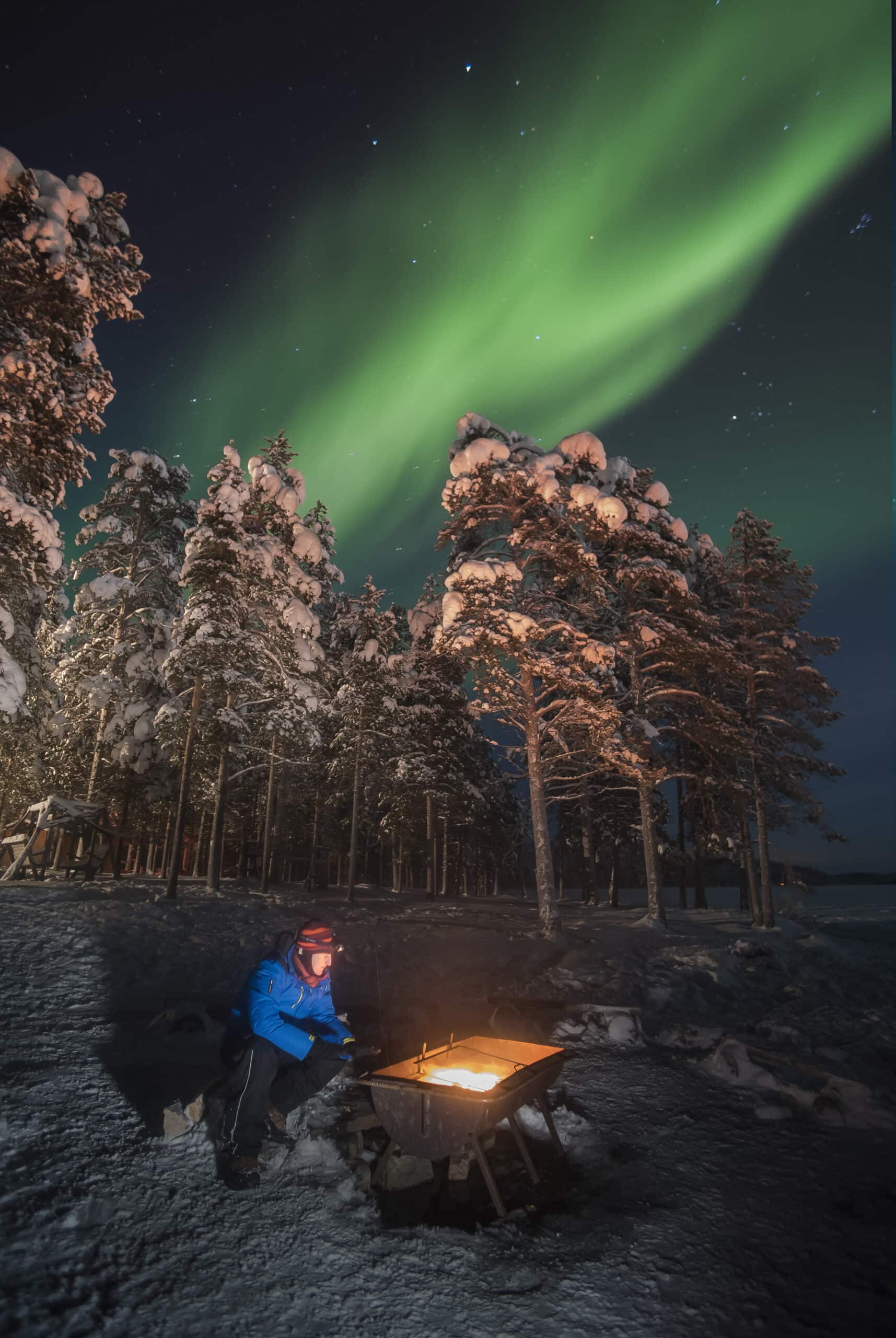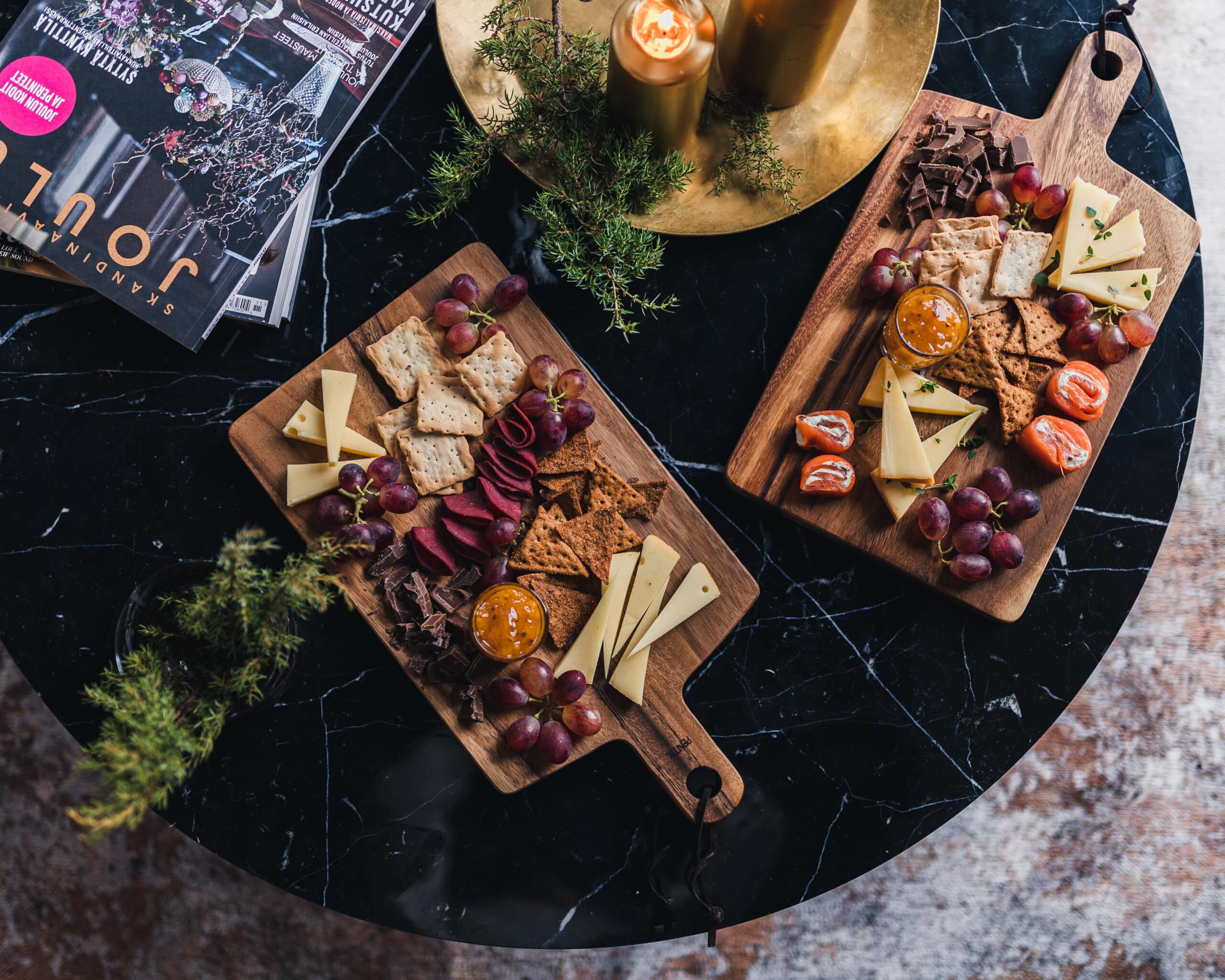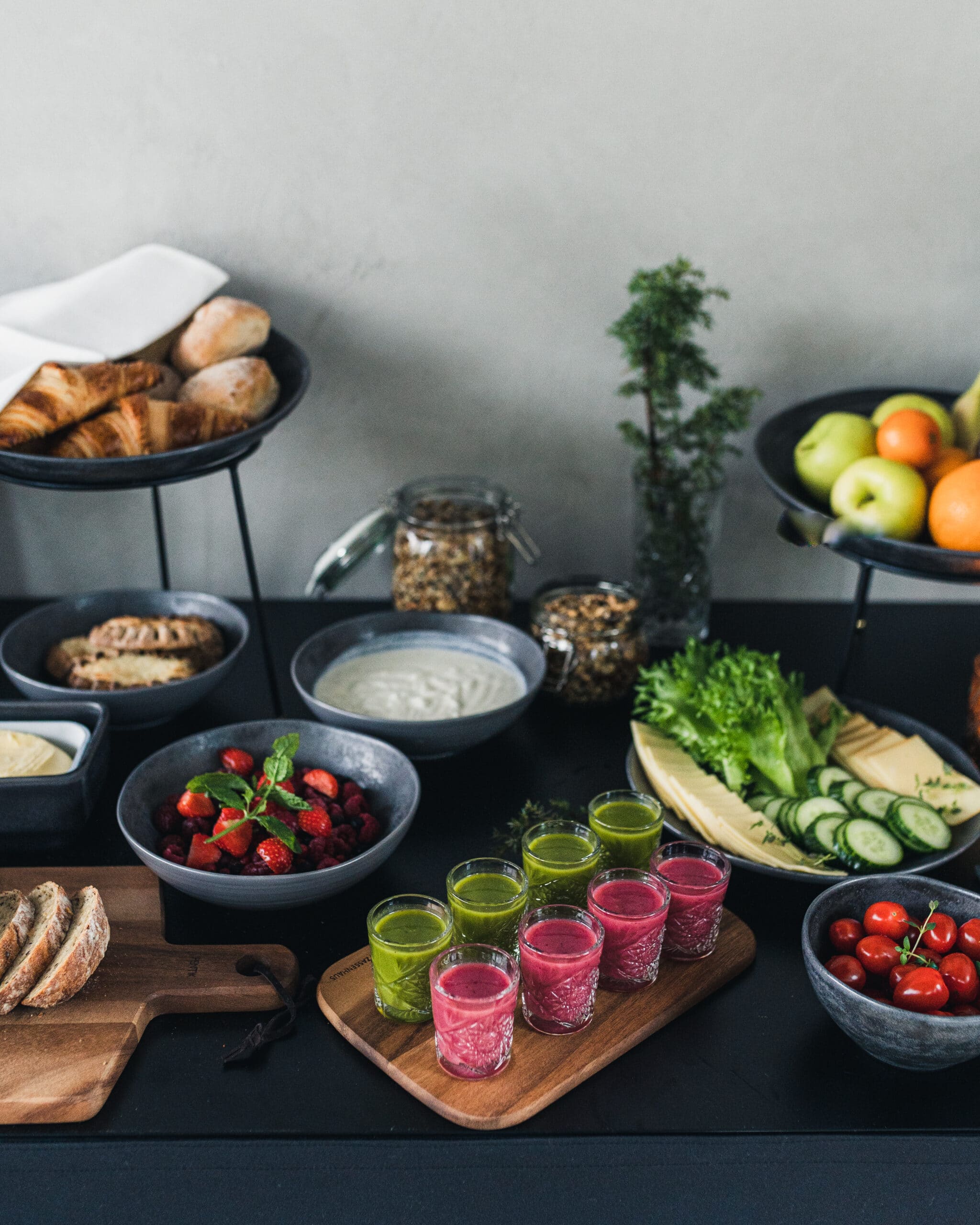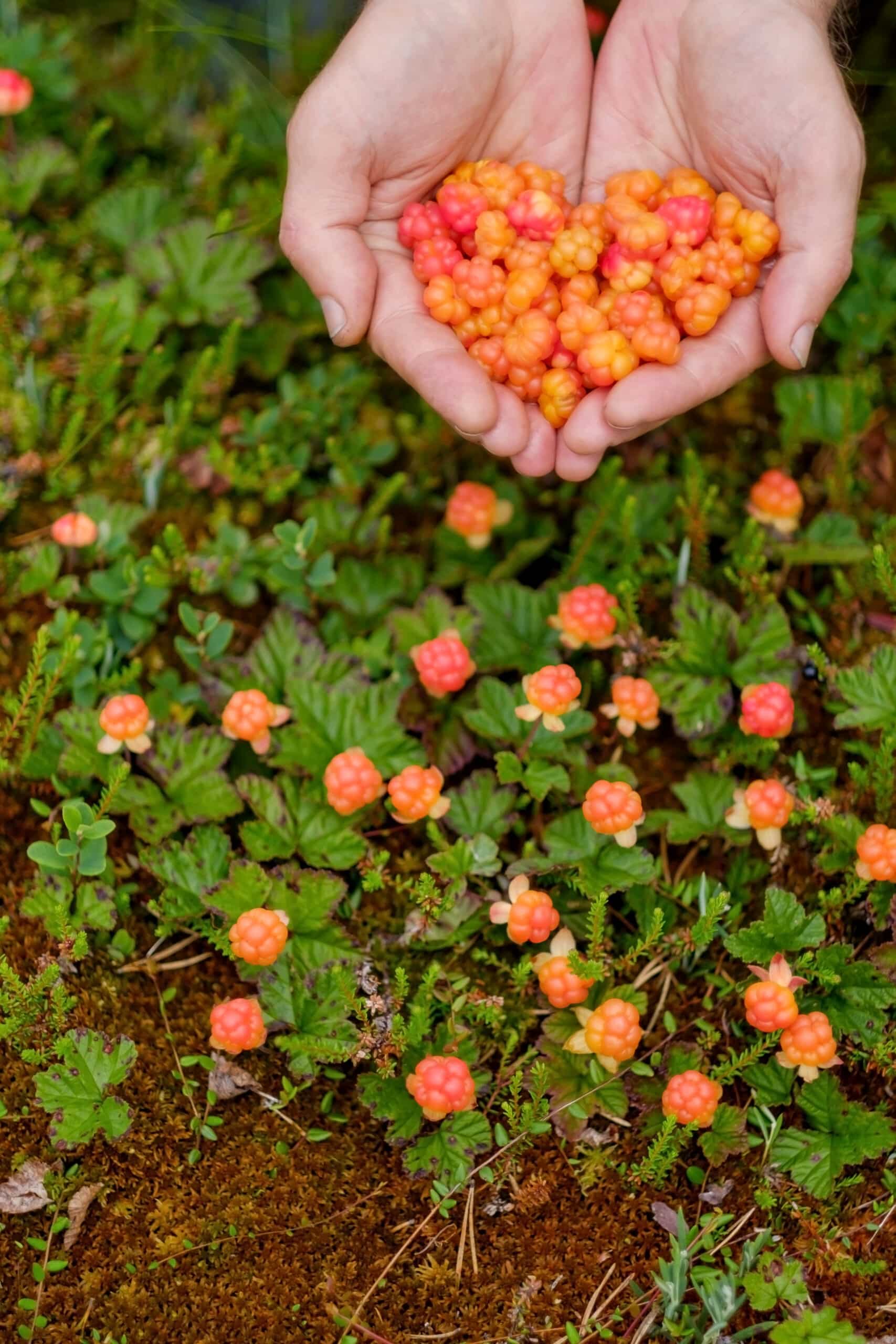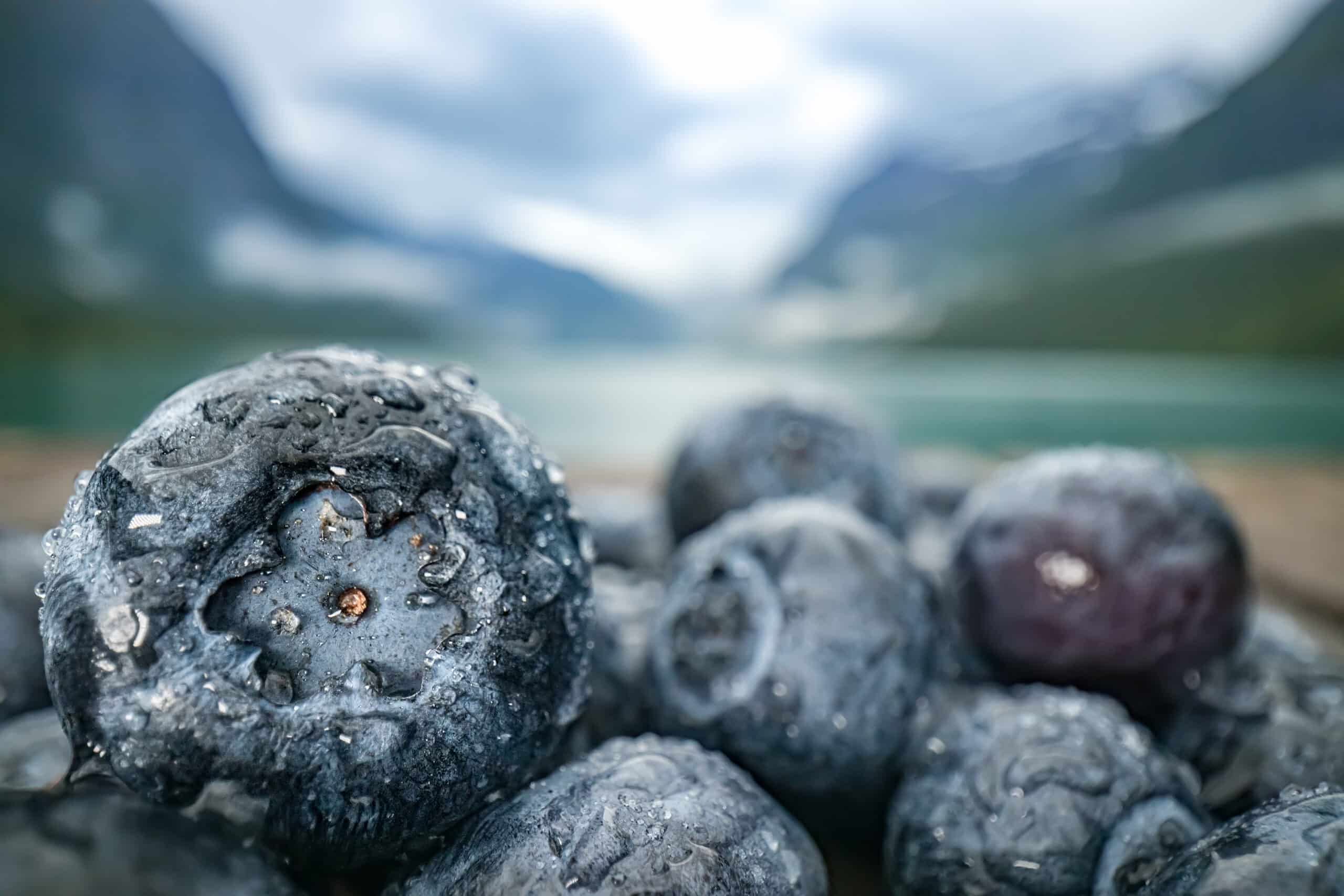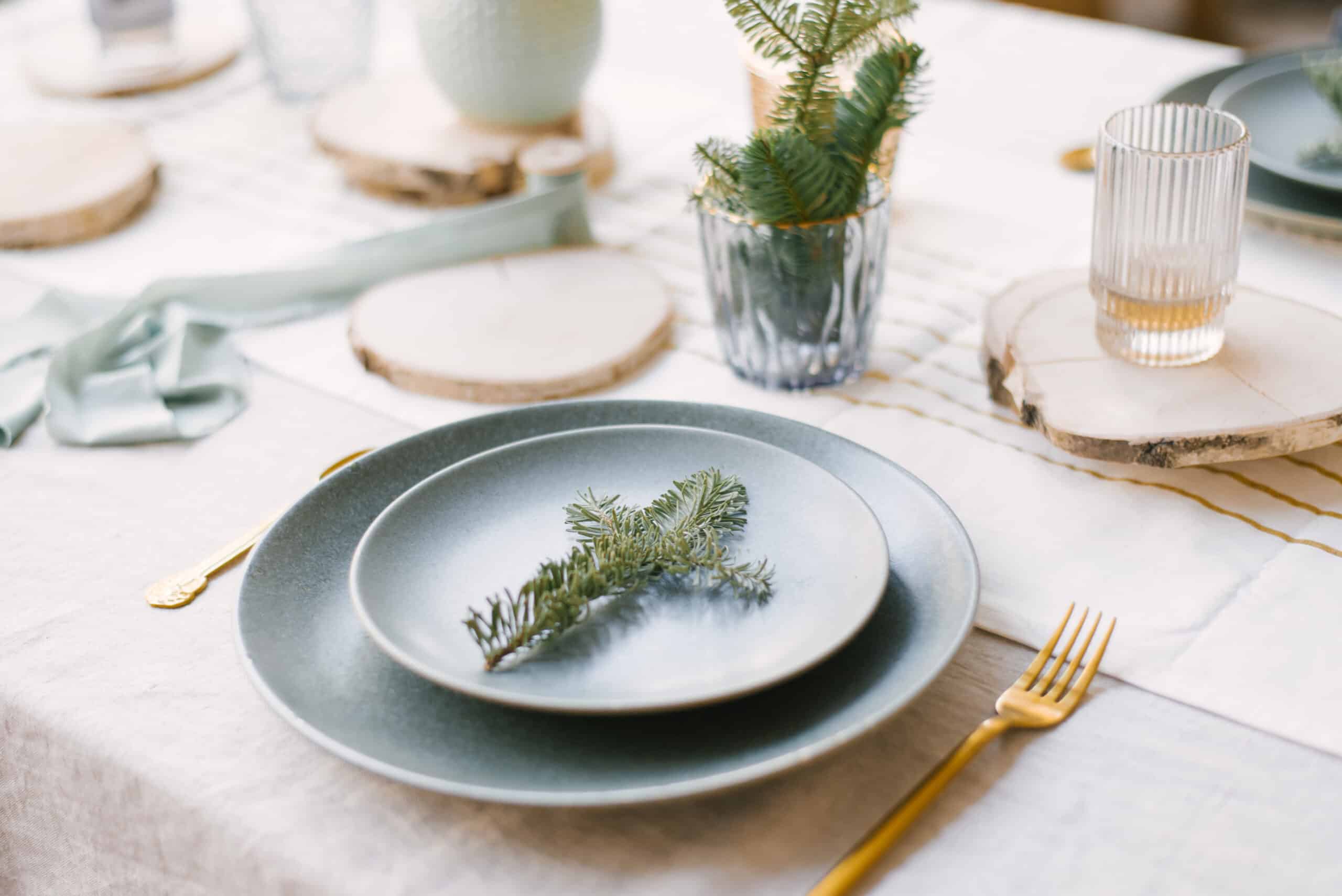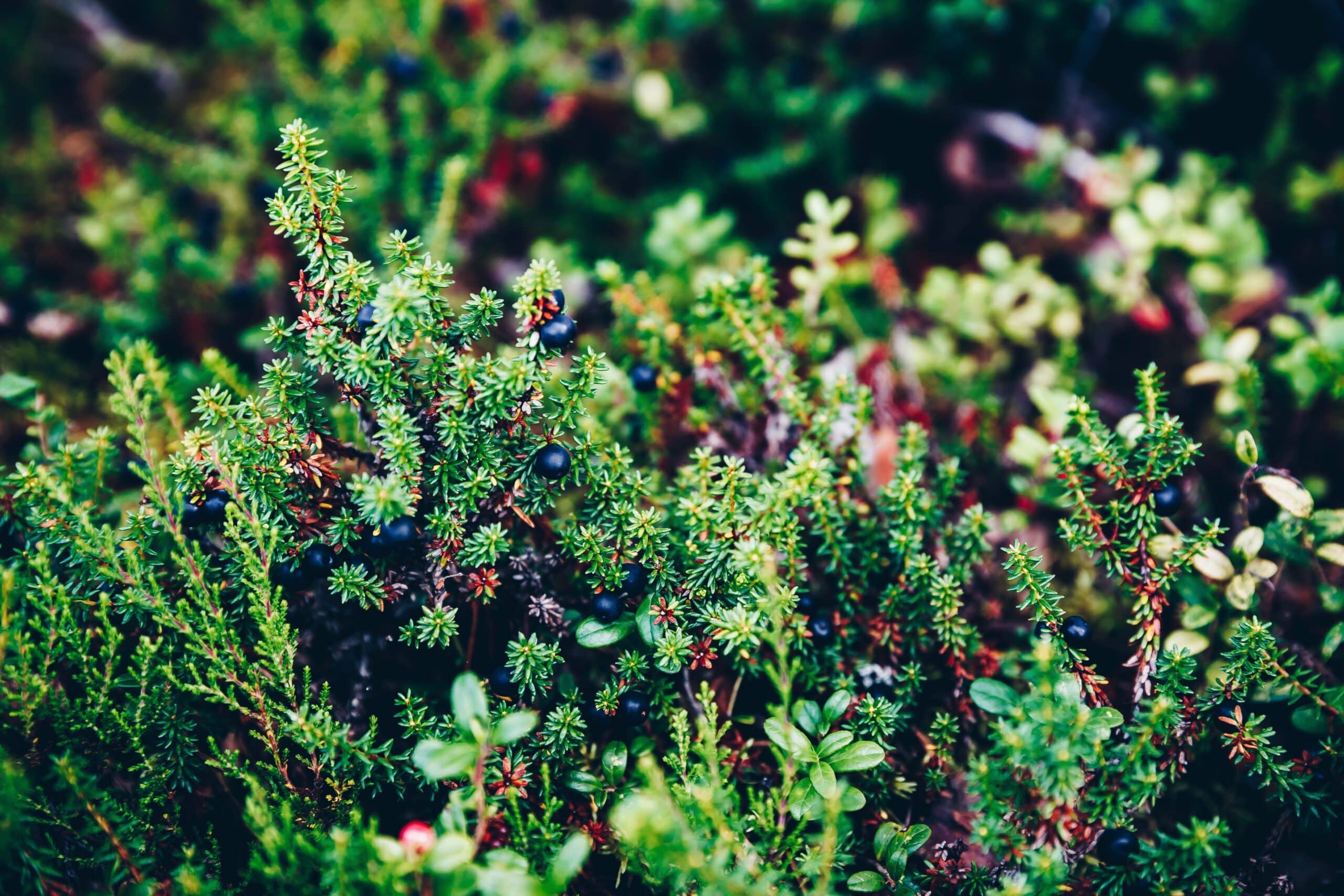Culinary Experiences
In Finnish Lapland, a region known for its unique culture and stunning natural landscapes, various culinary experiences offer a taste of the local traditions. These experiences showcase the intertwining of food, culture, and nature, providing unforgettable memories for visitors.
One exceptional culinary adventure is the traditional kota dinner. Set in a Saami teepee, or ”kota,” guests have the opportunity to savor local delicacies like reindeer stew, grilled salmon, and other Lapland specialties. The ambiance is truly unique as you sit around a warm, bubbling cauldron, immersing yourself in the flavors of the region.
For a more surreal dining experience, ice castles such as the Lumilinna Kemi SnowCastle offer exclusive dinners within icy surroundings. Here, you can indulge in Lappish specialties amidst breathtaking ice sculptures and ambient lighting, creating an atmosphere that turns a meal into an unforgettable occasion.
In many Lapland cabins and villas, the presence of traditional open fireplaces allows for intimate dining experiences by the warmth of the hearth. The crackling fire provides the backdrop as you enjoy local delicacies, and some accommodations even offer the option to have a chef prepare a meal specifically tailored to your tastes.
For those seeking a connection with nature, some excursion providers offer the chance to experience the traditional dish of poronkäristys (sautéed reindeer) cooked over an open fire in the great outdoors. This culinary adventure combines Lappish gastronomy with the beauty of the natural surroundings, allowing you to relish local flavors by the glow of a campfire, perhaps even under the northern lights.
Lappish Cuisine
Lappish cuisine, also recognized as Sámi cuisine, represents the traditional gastronomy of the Sámi people, who are the native inhabitants of Sápmi, a region spanning parts of northern Norway, Sweden, Finland, and Russia’s Kola Peninsula. This culinary tradition is deeply intertwined with the culture, environment, and resources of the Arctic region.
A distinctive feature of Lappish cuisine is its dependence on locally sourced ingredients, a necessity given the challenging Arctic climate. Key components include reindeer meat, fish (such as salmon and whitefish), berries (such as cloudberries, lingonberries, and bilberries), wild herbs, mushrooms, and flatbreads made from barley or oats. Reindeer herding, a significant aspect of Sámi culture, contributes to the prominent role of reindeer meat in numerous traditional dishes, prepared through methods like roasting, smoking, or drying.
Preservation techniques like drying, smoking, and fermenting are commonplace due to the extreme weather conditions in the Arctic.
Traditional dishes encompass ”Poronkäristys,” a classic Finnish dish featuring thinly sliced reindeer meat quickly fried in a hot pan until perfectly browned and seasoned with salt and pepper to let the natural taste of reindeer shine through. ”Lohikeitto,” or Finnish salmon soup, is a beloved and comforting dish in Finland, featuring salmon as the main ingredient alongside vegetables like potatoes, carrots, and leeks, often enhanced by the addition of dill for a fresh and aromatic flavor. Salmon soup may be adapted to suit Lappish tastes. ”Loimulohi” is a traditional Finnish dish involving grilling salmon on an open fire. The salmon is cured with a mixture of salt, sugar, and sometimes dill before being skewered onto a wooden plank, often cedar, and grilled next to an open flame.
Berries play a vital role in Lappish cuisine, finding use in desserts, sauces, and as accompaniments to meat dishes. The kuksa, a traditional Sámi wooden cup, is closely associated with Sámi culture and is utilized for drinking.
While Lappish cuisine remains rooted in tradition, modern influences and international ingredients have also made their way into contemporary Sámi cooking. Food plays a significant cultural role in Sámi events and celebrations, underlining the importance of traditional practices in community life.


